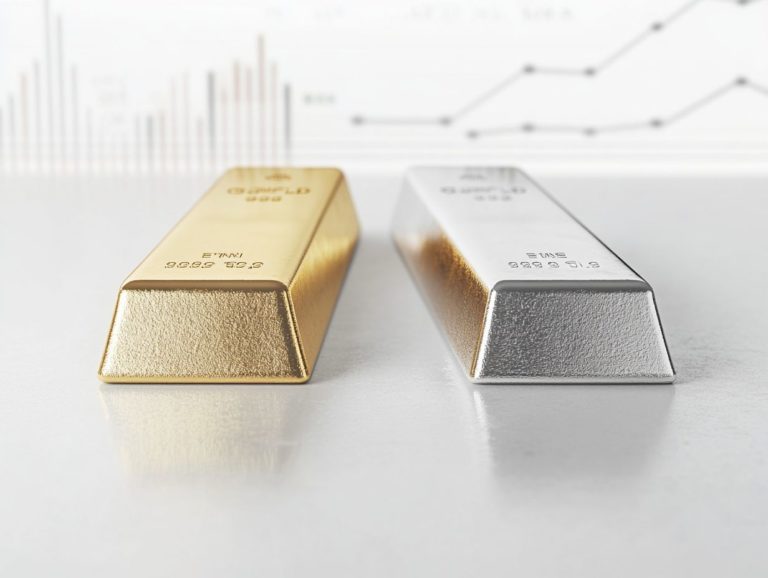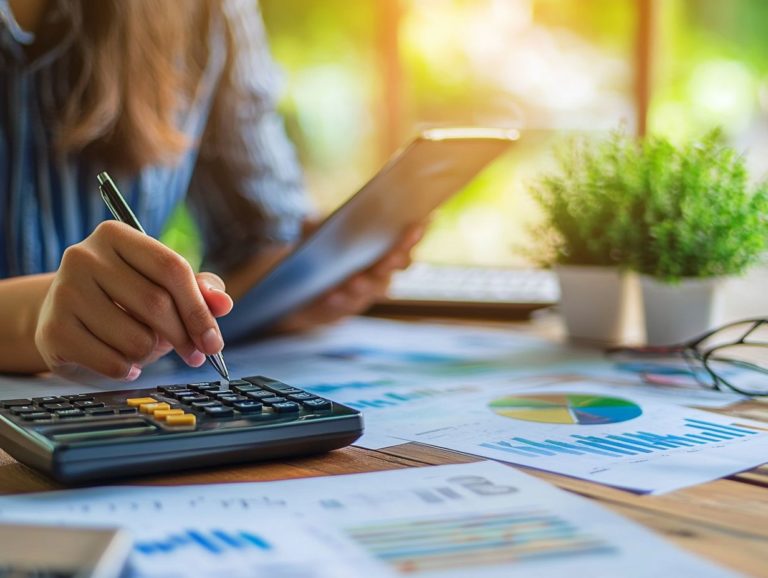How to Choose the Right Palladium Investment Strategy
Investing in palladium opens the door to exciting opportunities! Understanding the unique properties and benefits of this precious metal is crucial before diving in.
This discussion will illuminate what you need to know, including the factors that shape market trends and the different types of investments available. You’ll learn how to align your strategy with your objectives and risk tolerance.
With this knowledge, you can navigate the world of palladium investments confidently.
Contents
- Key Takeaways:
- Understanding Palladium Investments
- Factors to Consider Before Investing
- Types of Palladium Investments
- Choosing the Right Investment Strategy
- Frequently Asked Questions
- What factors should I consider when choosing a palladium investment strategy?
- How do I know when is the right time to buy or sell palladium?
- What are the different types of palladium investment strategies?
- Is palladium a long-term or short-term investment?
Key Takeaways:
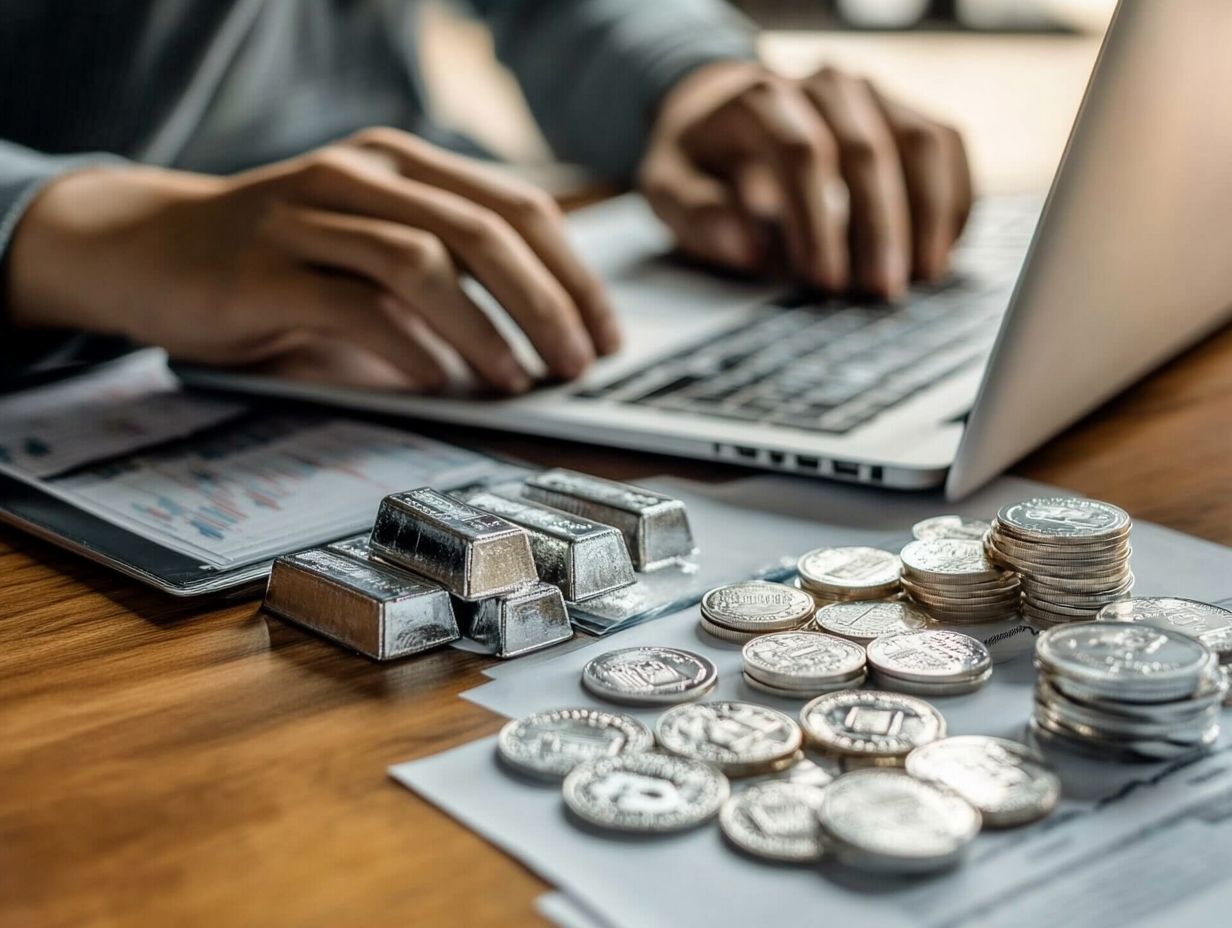
- Consider market trends and demand, as well as risk assessment, before investing in palladium.
- Assess personal goals and risk tolerance when choosing a palladium investment strategy.
- Expert recommendations can guide you to the right palladium investment strategy for your needs.
Understanding Palladium Investments
Understanding palladium investments requires a deep dive into the distinct characteristics and market dynamics of this precious metal, predominantly sourced from regions such as Russia, South Africa, Canada, and the United States.
As more car manufacturers need it especially for catalytic converters alongside demand from the jewelry and electronics sectors, palladium emerges as a crucial element in various industrial applications.
Look into different ways to invest, including physical palladium and palladium ETFs, to enrich your portfolio diversification and capitalize on the market’s fluctuating price performance.
What is Palladium?
Palladium, a rare and precious metal, was discovered by William Hyde Wollaston in 1803. It belongs to the prestigious platinum group metals alongside platinum and rhodium. It plays a crucial role in catalytic converters, which help reduce harmful emissions in cars.
This remarkable metal possesses unique properties such as exceptional corrosion resistance and high melting points, making it a favorite in various sectors. In the electronics industry, for example, palladium is utilized in the production of connectors, capacitors, and circuit boards due to its superior conductivity and reliability.
Its antibacterial attributes also enhance its value in healthcare applications, where it s used in medical devices and dental alloys. Beyond these industrial uses, palladium shines in the jewelry market, offering a lustrous finish and hypoallergenic qualities that cater to those with sensitive skin. It embodies elegance and functionality.
Benefits of Investing in Palladium
Investing in palladium offers a range of advantages, providing exposure to an asset that has seen increasing demand, particularly within the automotive sector. This trend often results in appealing price performance and enhances portfolio diversification.
Examining historical price movements reveals a compelling upward trajectory, driven by supply constraints and a surge in investment interest especially as central banks seek to hedge against inflation. By incorporating palladium into your portfolio, you not only mitigate risks associated with more traditional assets but also enhance your overall returns, capitalizing on its potential for appreciation.
As electric vehicles gain traction, the demand for palladium is expected to rise, rewarding investors who recognize its pivotal role in a robust investment strategy. Furthermore, palladium’s inherent properties provide resilience during market fluctuations, responding positively to shifts in supply and demand dynamics.
Factors to Consider Before Investing
Before investing in palladium, consider several key factors. Analyze market trends and demand dynamics, as these elements can significantly influence price fluctuations.
Conduct a thorough risk assessment to see how palladium futures and options fit into your overall investment strategy.
Ready to explore palladium investments? Start researching today!
Understanding Market Trends and Demand for Palladium
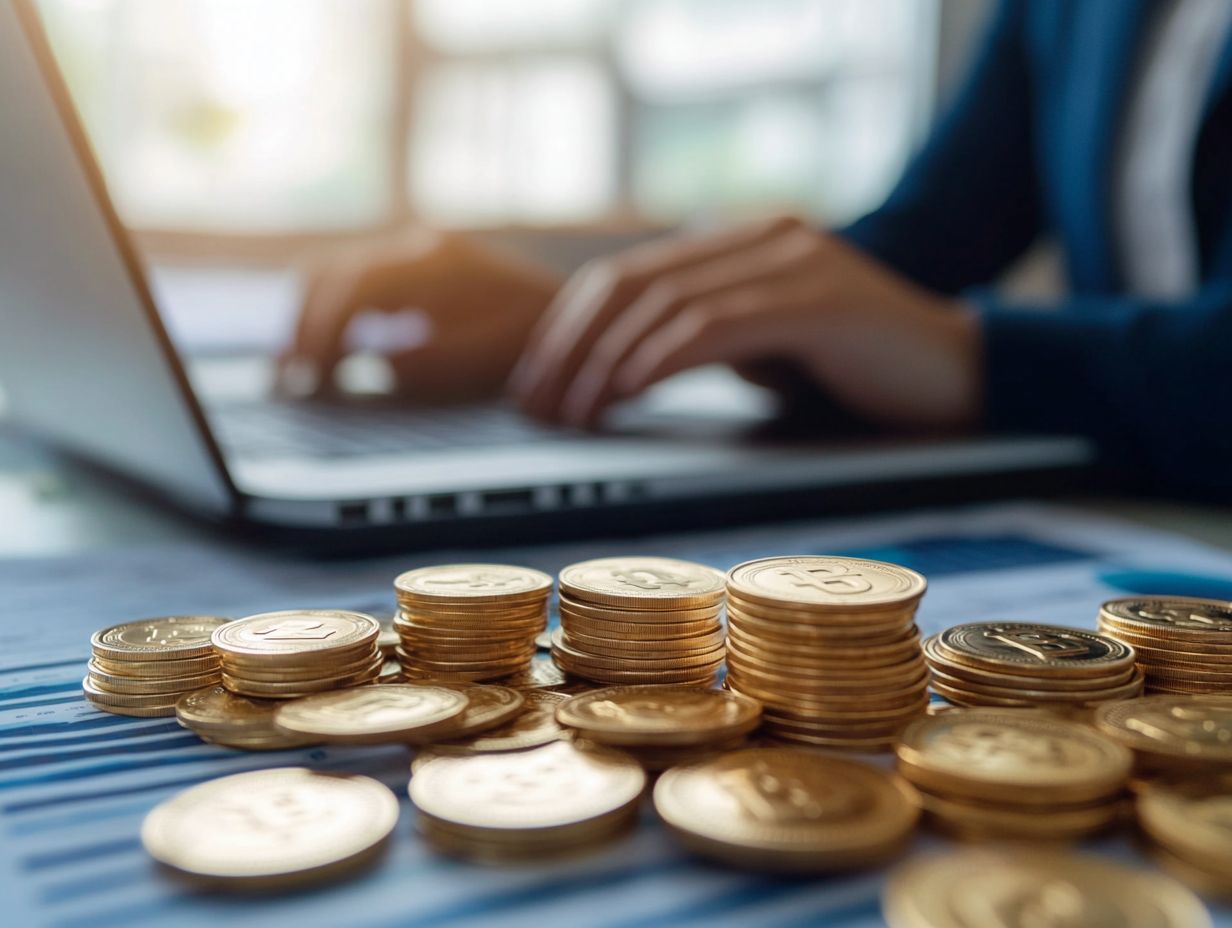
Current market trends reveal a rising demand for palladium, especially due to its vital role in the automotive industry for catalytic converters. Its applications in electronics and jewelry also significantly influence supply and demand dynamics that impact prices.
As environmental regulations tighten and the drive for cleaner emissions amplifies, reliance on palladium in the automotive sector is likely to increase. This trend is fueled by the growing production of electric vehicles, many of which incorporate palladium in hybrid models.
In electronics, palladium is increasingly used in high-performance components, which boosts its appeal. The jewelry market, while somewhat volatile, consistently recognizes the unique properties and aesthetic allure of palladium.
Together, these diverse sectors shape the palladium market, driving pricing trends. Investors and manufacturers must navigate this evolving landscape.
Risk Assessment
Conducting a risk assessment is essential when considering palladium as an investment. The market is prone to fluctuations driven by geopolitical factors, economic conditions, and shifts in demand from key industries. This makes it imperative to devise a strong investment plan.
Be mindful that price volatility can stem from unexpected changes in global economies or regulatory landscapes. Adjustments in automotive emissions standards or breakthroughs in technology can significantly impact palladium demand.
Supply chain issues, like mining disruptions or changes in trade policies, can also impact prices. Considering these uncertainties, make sure to assess your own risk tolerance and investment objectives.
Consulting a financial advisor who specializes in precious metals can provide tailored strategies that align with your unique circumstances, helping you make informed decisions in this ever-evolving market.
Types of Palladium Investments
When exploring palladium investments, you have a range of enticing options. You can opt for physical palladium in the form of bullion coins, delve into exchange-traded funds (ETFs), or consider palladium mining stocks.
Each of these choices presents unique advantages and the potential to enhance your portfolio s diversification.
Physical Palladium
Investing in physical palladium typically involves acquiring high-purity bullion coins. These have garnered popularity among collectors and investors eager for tangible assets that offer intrinsic value.
To enter this market, explore various reputable dealers or online platforms specializing in precious metals. Before making a purchase, compare prices and ensure the palladium you re considering comes with recognized certification for high purity.
Once you ve acquired these assets, think about secure storage solutions such as safe deposit boxes or dedicated home safes to safeguard against theft or damage.
Market considerations are vital; fluctuating demand, industrial applications, and geopolitical factors can greatly impact palladium prices. This introduces both opportunities and risks to your investment strategy.
Palladium ETFs
Palladium ETFs present a seamless avenue to gain exposure to palladium without the hassle of physical storage. This makes them an appealing choice for those eager to weave palladium into their investment strategy.
These funds typically mirror the price movements of palladium, facilitating easier trading and diversification within your portfolio. Unlike physical investments that require secure storage and insurance, ETFs simplify the process and mitigate risks associated with managing tangible assets. For those interested in precious metals, it’s important to learn how to start investing in gold safely.
Investing in ETFs can lead to lower fees compared to the costs of purchasing and maintaining physical palladium. However, assess the performance history and associated expenses, as not all ETFs are created equal.
Consulting a financial advisor can be a wise step, helping you navigate these options and ensure they align with your overall investment goals. Ready to invest in palladium? Explore your options today!
Palladium Mining Stocks
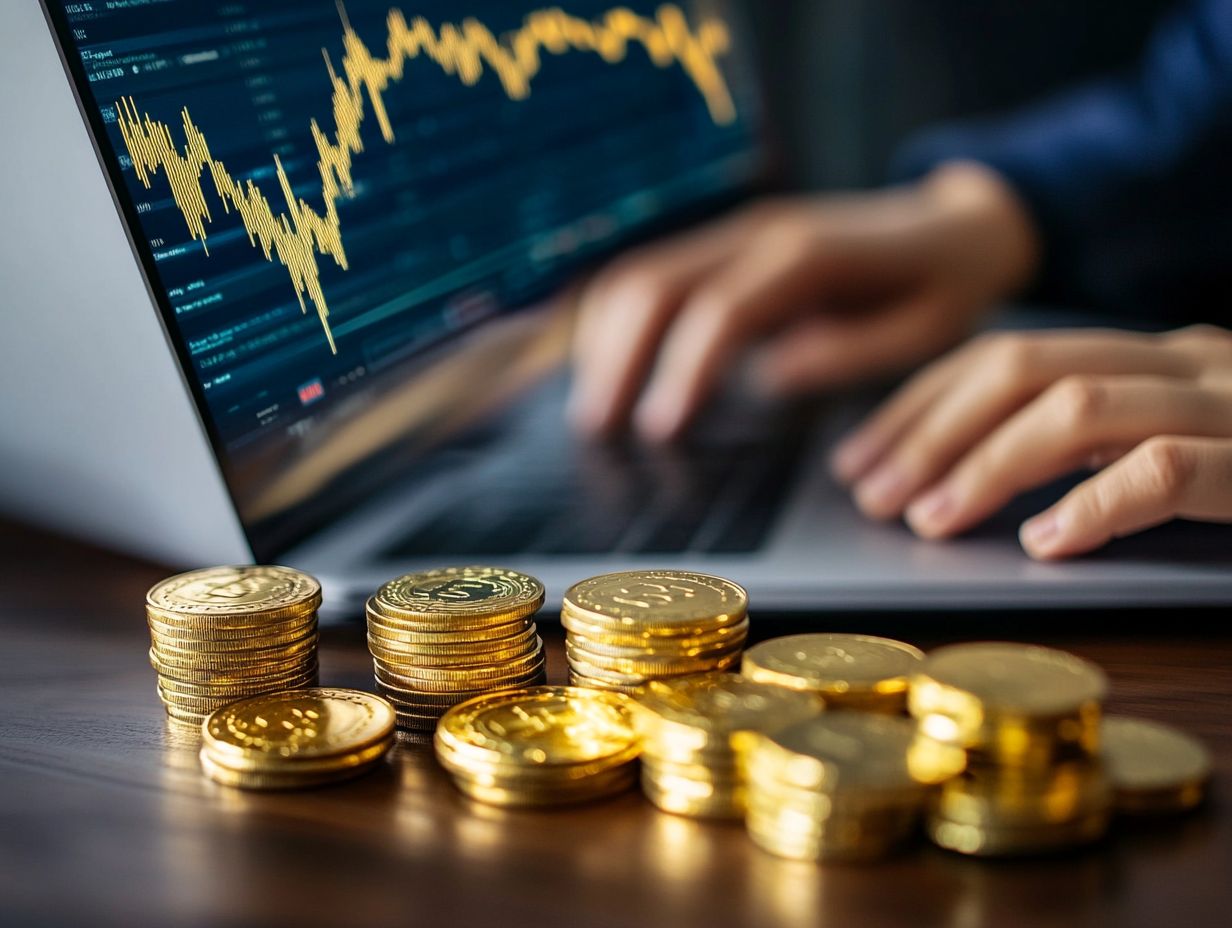
Investing in palladium mining stocks presents a compelling opportunity for you to capitalize on the potential appreciation of companies involved in the extraction and production of palladium. While this can often lead to higher returns and enhanced investment performance, be aware, though, that this opportunity comes with increased risk embrace it wisely!
With demand for palladium largely fueled by its vital role in the automotive industry, especially in catalytic converters, it’s crucial for you to conduct thorough market analysis before making any commitments. Additionally, when investing in precious metals, knowing the best safe types for precious metals is essential. The volatility of mineral prices can cause significant fluctuations in stock values, making it vital for you to assess historical performance and market trends.
To mitigate some of the risks associated with single-sector investments, consider diversifying your portfolio. By spreading your investments across various assets, you can achieve balanced exposure, which may lead to more stable long-term returns.
Choosing the Right Investment Strategy
Selecting the ideal investment strategy for palladium requires a thoughtful evaluation of your personal goals and risk tolerance. This enables you to easily navigate a variety of options, from physical palladium to Exchange-Traded Funds (ETFs) and mining stocks, all while ensuring that your choices align seamlessly with your financial objectives.
Assessing Personal Goals and Risk Tolerance
Assessing your personal goals and risk tolerance is crucial for crafting a successful investment strategy in palladium. This process helps you gauge how much market volatility you can endure and clarify the financial objectives you wish to achieve.
By utilizing tools like risk assessment questionnaires and diving into historical performance data, you can gain valuable insights into your investment mindset. Having well-defined financial goals, whether it’s saving for retirement, funding education, or preserving wealth, can steer you toward effective allocation strategies in palladium. Additionally, understanding how to choose the right safe for gold is crucial for securing your investments.
Understanding market conditions, including supply-demand dynamics and political and global issues, is equally vital. These insights not only enable you to time your market entries and exits more effectively but also ensure your investment decisions align with your broader financial roadmap. This alignment keeps your portfolio agile in response to your personal aspirations and the ever-evolving economic landscape.
Expert Recommendations
Expert recommendations highlight the need for you to diversify your palladium investments. Consider a blend of palladium options ranging from physical assets to ETFs and mining stocks that align with your unique risk profile and investment strategy.
Given the ever-shifting market dynamics and the increasing demand for this precious metal, you should explore various avenues that resonate with your long-term financial aspirations. A comprehensive understanding of market trends, including the nuances of supply and demand fluctuations, is crucial for making informed decisions.
By integrating palladium into your broader portfolio, you can effectively mitigate risks tied to economic volatility. Engaging with a qualified financial advisor offers invaluable personalized insights, enabling you to navigate the complexities of the investment landscape with confidence. Additionally, if you’re considering diversifying with precious metals, exploring the best ways to secure physical gold can optimize your returns while staying within your defined risk tolerance.
Frequently Asked Questions
What is palladium and why is it a good investment?
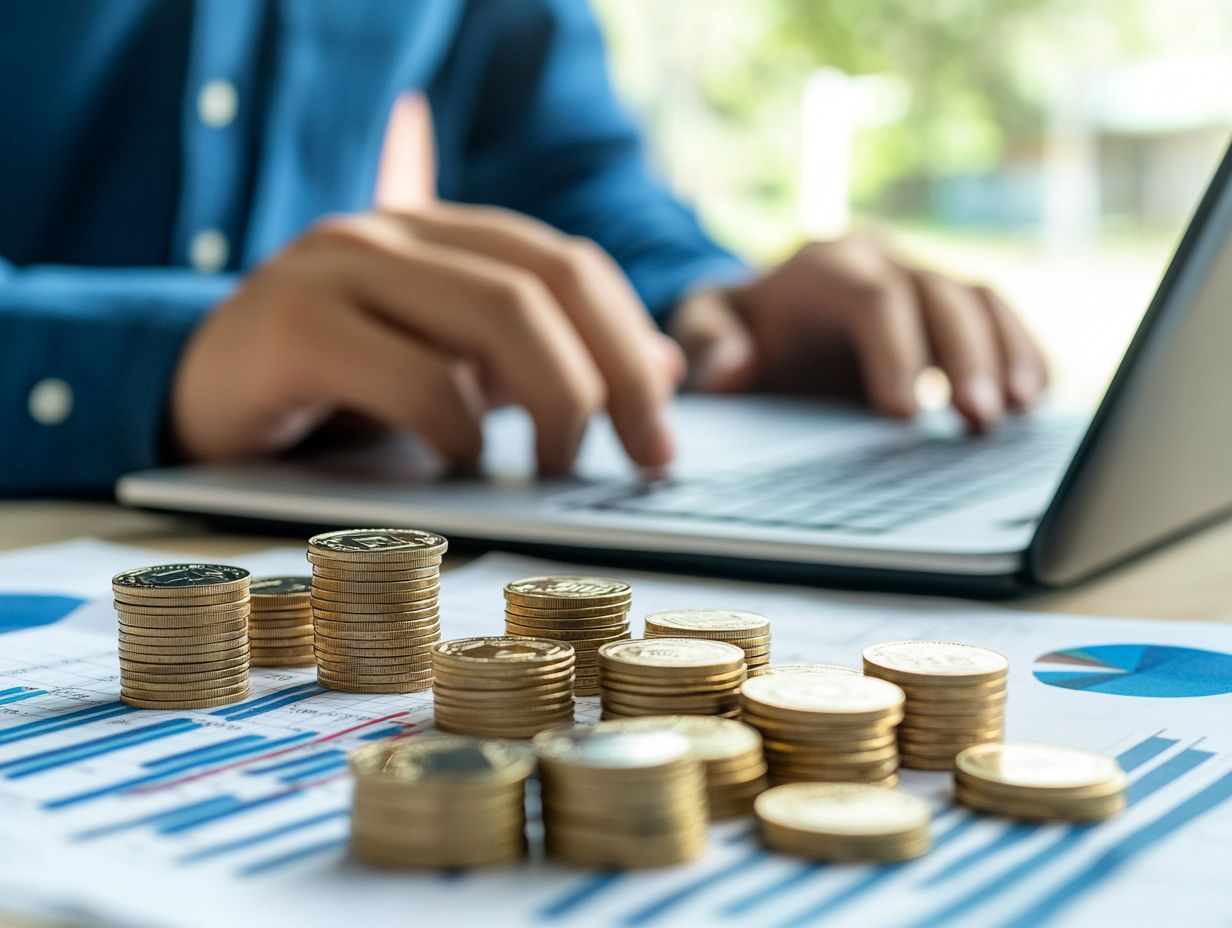
Palladium is a rare precious metal that is used in a variety of industries, including automotive and jewelry. It has consistently performed well in the market and is considered a safe hedge against economic uncertainty.
Should I invest in physical palladium or palladium stocks?
This depends on your personal investment goals and risk tolerance. Physical palladium allows for direct ownership and control, while palladium stocks offer the potential for higher returns but also come with more risk.
What factors should I consider when choosing a palladium investment strategy?
Start by assessing your budget and investment goals. Consider your timeline and how much risk you are comfortable taking.
How do I know when is the right time to buy or sell palladium?
Timing the market can be tricky. Conduct thorough research and stay updated on market trends before making decisions.
Consulting with a financial advisor can help pinpoint the best times to make your moves.
What are the different types of palladium investment strategies?
There are several strategies for investing in palladium. These include physical ownership, palladium stocks, and palladium exchange-traded funds (ETFs), which are investment funds that track the price of palladium.
Each option has its own advantages and risks. Be sure to choose a strategy that aligns with your investment goals.
Is palladium a long-term or short-term investment?
Palladium can be an exciting investment opportunity, whether you re looking at short-term gains or long-term wealth. Having a clear investment plan and monitoring market trends is crucial for making informed decisions.











